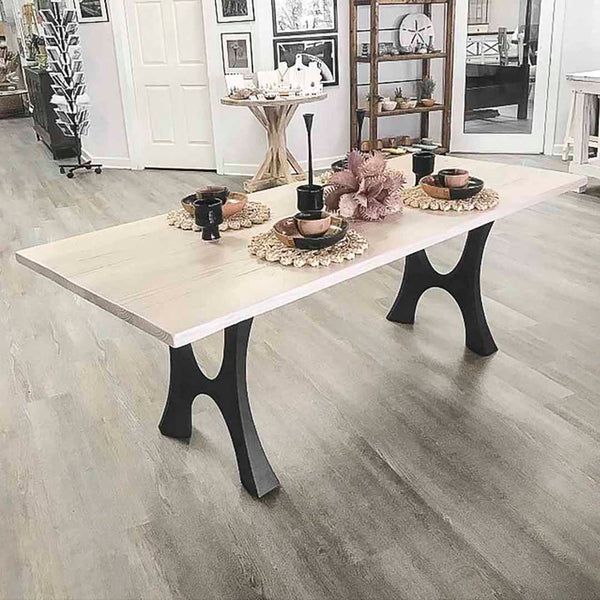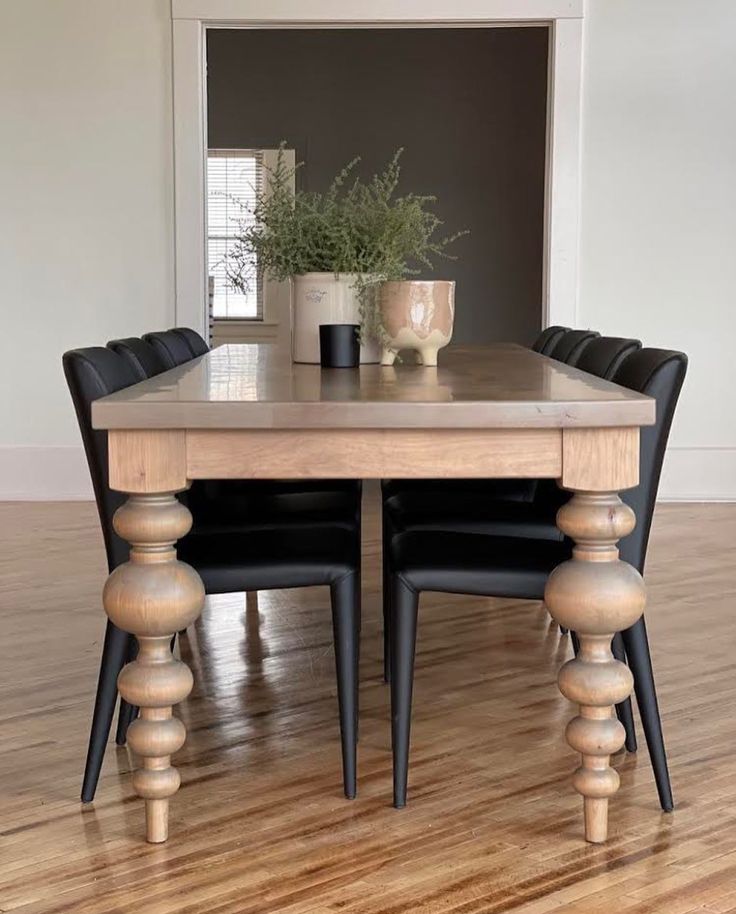Why Custom Dining Room Table Legs Are Worth the Investment
Why Custom Dining Room Table Legs Are Worth the Investment
Blog Article
From Typical to Modern: Discover the Ideal Eating Space Table Legs for Your Style
While classic designs such as cabriole and transformed legs evoke a sense of ageless sophistication, modern designs like barrette and geometric choices provide an opportunity for striking visual passion. As you think about these elements, the concern stays: exactly how can you effortlessly integrate these diverse leg designs to develop a harmonious eating experience?
Recognizing Table Leg Styles
The range of dining room table leg styles can considerably influence both the aesthetics and functionality of the area. Each leg design contributes unique functional functions and aesthetic elements, satisfying varied design choices and usage demands. Recognizing these styles is crucial for picking the appropriate table that aligns with your overall interior decoration vision.
For instance, tapered legs supply a tidy, traditional look that can boost a space's elegance, while pedestal bases provide security and make the most of legroom, making them perfect for smaller sized areas. Hairpin legs, a characteristic of mid-century contemporary design, present an industrial flair, permitting an airy, open feeling. Trestle legs evoke rustic beauty, giving durable support and a feeling of timelessness.
Wooden legs can bring heat and appearance, whereas metal choices frequently share a sleek, contemporary ambiance. Ultimately, comprehending table leg designs is vital for creating a natural eating area that mirrors personal style while making certain functionality and convenience.
Standard Table Leg Options
When selecting eating room table legs, typical choices commonly symbolize classic elegance and workmanship. These layouts show a rich heritage and a commitment to top quality, making them perfect for those that appreciate classic aesthetic appeals.
One of one of the most renowned typical leg styles is the cabriole leg, defined by its elegant bent form. This layout frequently features decorative carvings and is most frequently located in Queen Anne and Chippendale furniture. Another prominent option is the transformed leg, which flaunts a collection of smooth, rounded forms that supply a traditional look while maintaining stability.
Furthermore, the straight leg, while simple, supplies a basic and durable structure that can blend seamlessly with a variety of tabletop styles. For those attracted to ornate detailing, claw-and-ball feet legs stimulate a sense of grandeur and can function as a spectacular prime focus in any eating area.
Finally, pedestal bases, although not purely legs, supply an alternative traditional alternative that enables for sufficient legroom and can be wonderfully sculpted. Each of these standard leg styles adds to the general ambiance of a dining-room, marrying feature with aesthetic allure.

Modern Table Leg Designs
Modern table leg layouts provide a varied variety of styles that stress clean lines and innovative products. These layouts commonly prioritize capability while serving go now as striking focal points within a dining room. Minimal visual appeals prevail, with legs crafted from products such as metal, glass, and crafted timber, which add to a ventilated and modern feeling.
One popular design is the hairpin leg, characterized by its slender, conical framework that gives security without overwhelming the table top (dining room table legs). This design is commonly located in mid-century modern furnishings and can easily match numerous eating table shapes. An additional trend is making use of geometric forms, where legs may handle unbalanced or angular forms, including his response aesthetic rate of interest and a touch of virtuosity

Mixing Designs for Distinct Areas
Usually, homeowners seek to create special eating areas that show their personal style by mixing different design components. This technique permits the consolidation of diverse aesthetics, leading to an unified yet unique environment. Combining a rustic wooden table with streamlined, contemporary steel legs can create an appealing contrast that boosts the space's overall charm.
In addition, incorporating vintage table legs great site with contemporary table tops can evoke a feeling of background while preserving a contemporary perceptiveness. Such combinations not only showcase specific taste but additionally urge creativity, enabling home owners to curate a space that really feels both personal and inviting.
Shade plays a crucial function in this mixing process; selecting table legs that match or contrast with the existing color system can boost visual rate of interest. Whitewashed legs can soften the daring of a dark table surface area, creating a well balanced aesthetic.
Tips for Picking the Right Legs
Picking the right table legs is important for achieving both performance and visual charm in your dining area. Begin by taking into consideration the general design of your room. Standard settings take advantage of legs that feature elaborate carvings or transformed designs, while modern rooms might require streamlined, minimalist styles.
Following, examine the height and stability of the legs. dining room table legs. Basic eating tables vary in between 28 to 30 inches in height, so guarantee the legs complement this dimension for comfort. Additionally, robust materials, such as hardwood or steel, can boost stability and longevity
Evaluate the leg form too-- options consist of straight, tapered, or stand designs. Straight legs provide a traditional look, while tapered legs can add a touch of elegance. Pedestal bases provide ample legroom and are optimal for smaller areas.
Conclusion
In summary, picking the optimal eating room table legs calls for careful consideration of both standard and contemporary designs. By integrating leg design, height, and material with the overall décor, a natural and welcoming atmosphere can be attained.
The selection of dining space table leg styles can significantly affect both the visual appeals and capability of the space. Ultimately, recognizing table leg styles is essential for creating a cohesive dining location that reflects individual style while guaranteeing functionality and comfort.One of the most legendary conventional leg designs is the cabriole leg, identified by its graceful curved form. Straight legs offer a timeless look, while conical legs can include a touch of beauty.In recap, selecting the optimal eating room table legs calls for cautious factor to consider of both traditional and modern-day designs.
Report this page